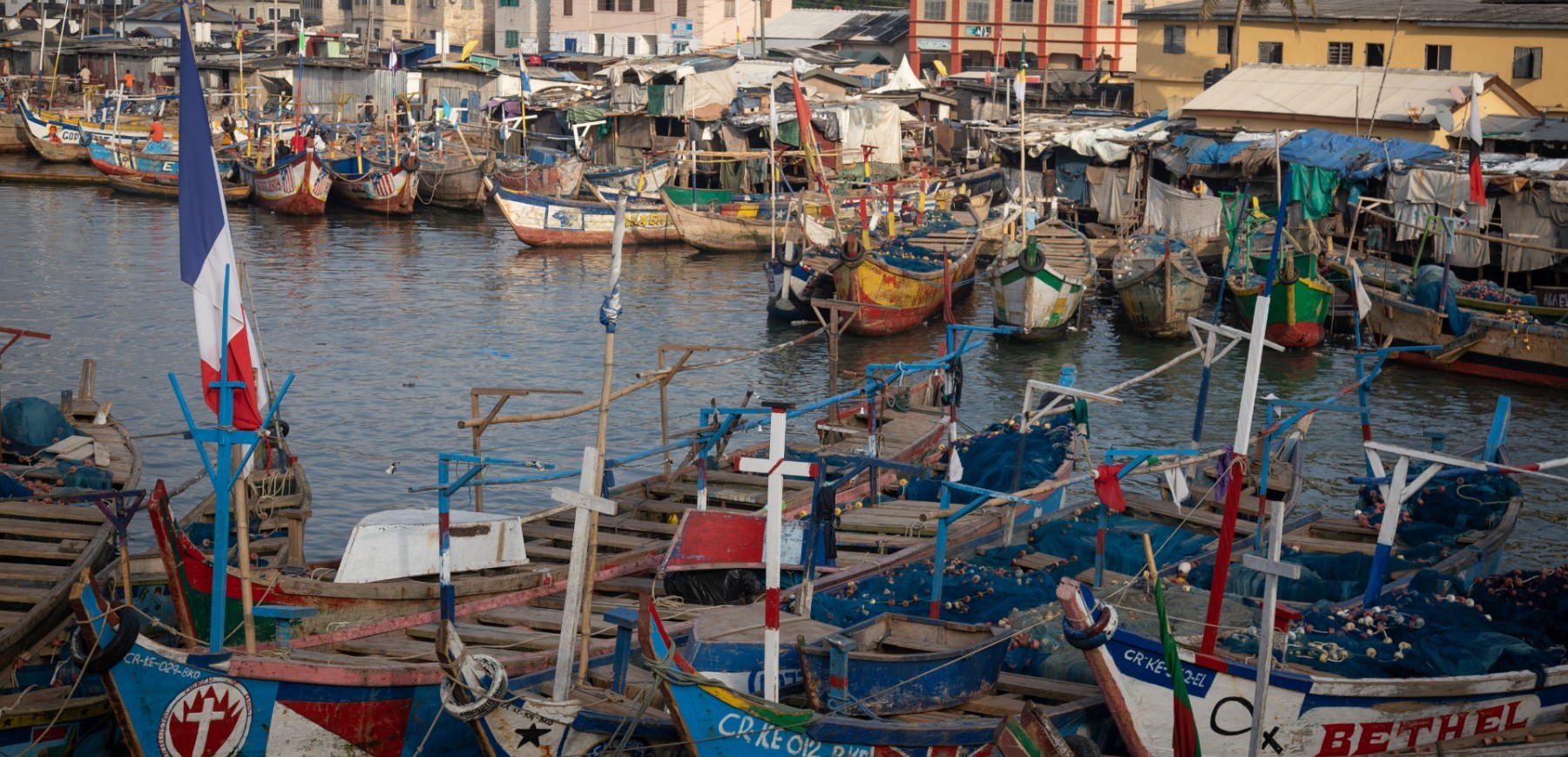Along Ghana’s 330 mile coastline, the ocean provides food and income for millions of people.
In the last half-century, industrial vessels have flocked to these waters, trawling the sea for fish to export overseas.
Now an illegal practice, known locally as saiko, is pushing Ghana's fisheries to the brink.
saiko
Saiko is the local name for a particularly destructive form of illegal fishing, where foreign trawlers target the staple catch of Ghanaian canoe fishers. It is then transferred to specially adapted canoes out at sea, and sold back to the fishing communities.
This used to be a practice whereby canoes would buy the unwanted by-catch of industrial vessels. However, the practice has developed into lucrative organised crime. Trawlers are now illegally targeting what should be by-catch, which they are not licensed to fish for. They then sell this back to the local people - who are forced to buy it, because as a direct result of saiko, they are struggling to catch enough fish to sustain their livelihoods.
These catches, which often contain juvenile fish, are landed by the saiko canoes for onward sale to local markets. This has severe implications for Ghana’s small-scale fishing industry - which is critical to food security and provides significantly more jobs than the saiko industry.
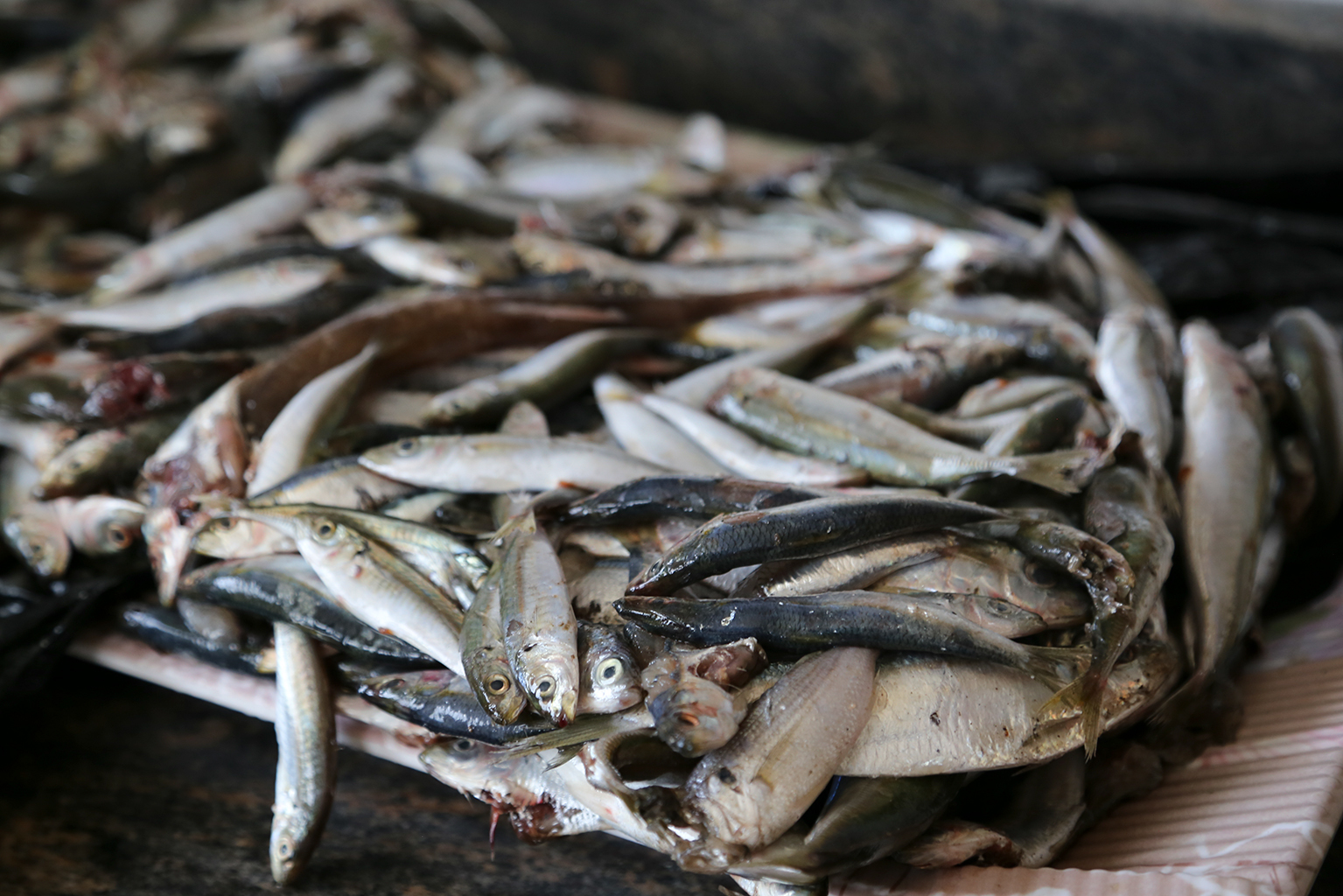
Saiko is illegal, attracting a fine of between US$100,000 and US$2 million. The minimum fine increases to US$1 million where catches involve juvenile fish or the use of prohibited fishing gear.
Although saiko activities are widespread, there is a very low risk of arrest and sanction. Cases are generally settled through opaque out of court settlement processes, and there are no known examples of the minimum fines being paid.
EJF's investigations have also revealed that 90% of the trawlers are owned by Chinese companies. Foreign ownership is illegal under Ghanian law, so the trawlers are operating under front companies. But the fishers we spoke to describe Chinese ownership as an 'open secret'.
As saiko is an illegal and unreported fishing practice, there is limited information on the quantity of fish in the saiko trade, the composition of catches, and the implications for sustainable fisheries management. Stolen at Sea provides an overview of the current scale and impact of saiko, based on extensive quantitative and qualitative fieldwork in Ghana.
Key findings
This study estimates that approximately 100,000 metric tonnes of fish were landed through saiko in 2017.
We estimate the value of this fish sold at sea to be between US$ 40.6 and US$ 50.7 million, and between US$ 52.7 and US$ 81.1 million when sold at the landing site.
These figures indicate that, up to now, the impact of the industrial trawl fleet on Ghana’s marine fisheries resources has been severely underestimated.
Combining saiko landings with official landings reported by the industrial trawl fleet of 67,205 metric tonnes, it is estimated that trawlers caught approximately 167,000 metric tonnes of fish in 2017. This suggests that just 40% of catches were landed legally and reported to the Fisheries Commission in 2017, despite observers being present on a number of vessels.
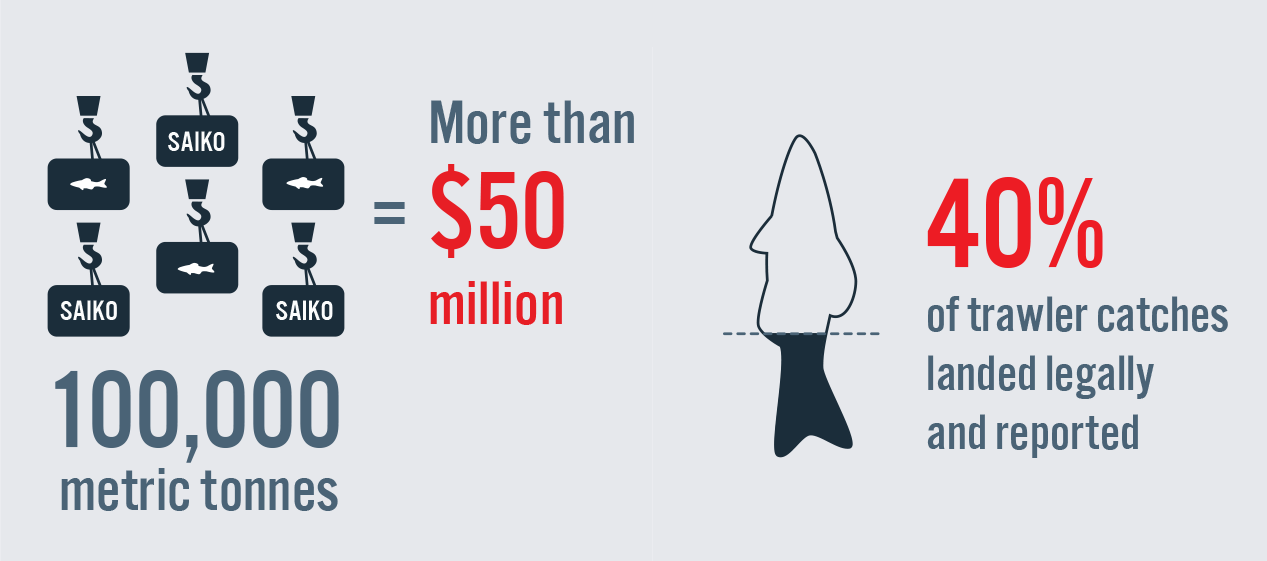
The magnitude of saiko landings highlights how the benefits to come from fishing are no longer being fairly distributed.
The saiko industry has expanded rapidly in recent years, at a time of severe declines in the catches of artisanal fishers. In 2017, around 80 saiko canoes landed the equivalent of over 55% of the landings of the entire artisanal sector. With the capacity to hold around 26 tonnes of fish, an average saiko canoe lands in a single trip the equivalent of approximately 450 artisanal fishing trips.
Saiko concentrates profits in the hands of a few individuals who have seen their bargaining power increase over time. Processors report being obliged to purchase saiko fish, despite making a loss due to spoilage, so as not to lose favour with saiko owners and risk future supply.
The employment provided by Ghana’s artisanal fishing sector dwarfs the number of individuals employed in the saiko trade. The artisanal sector provides direct employment for over 100,000 fishers across 292 landing sites in 186 coastal villages. In contrast, it is estimated that the saiko industry provides direct employment for up to 1,500 crew members, watchmen and hustlers at the three landing sites of Elmina, Apam and Axim, although this is likely to be an over-estimate.
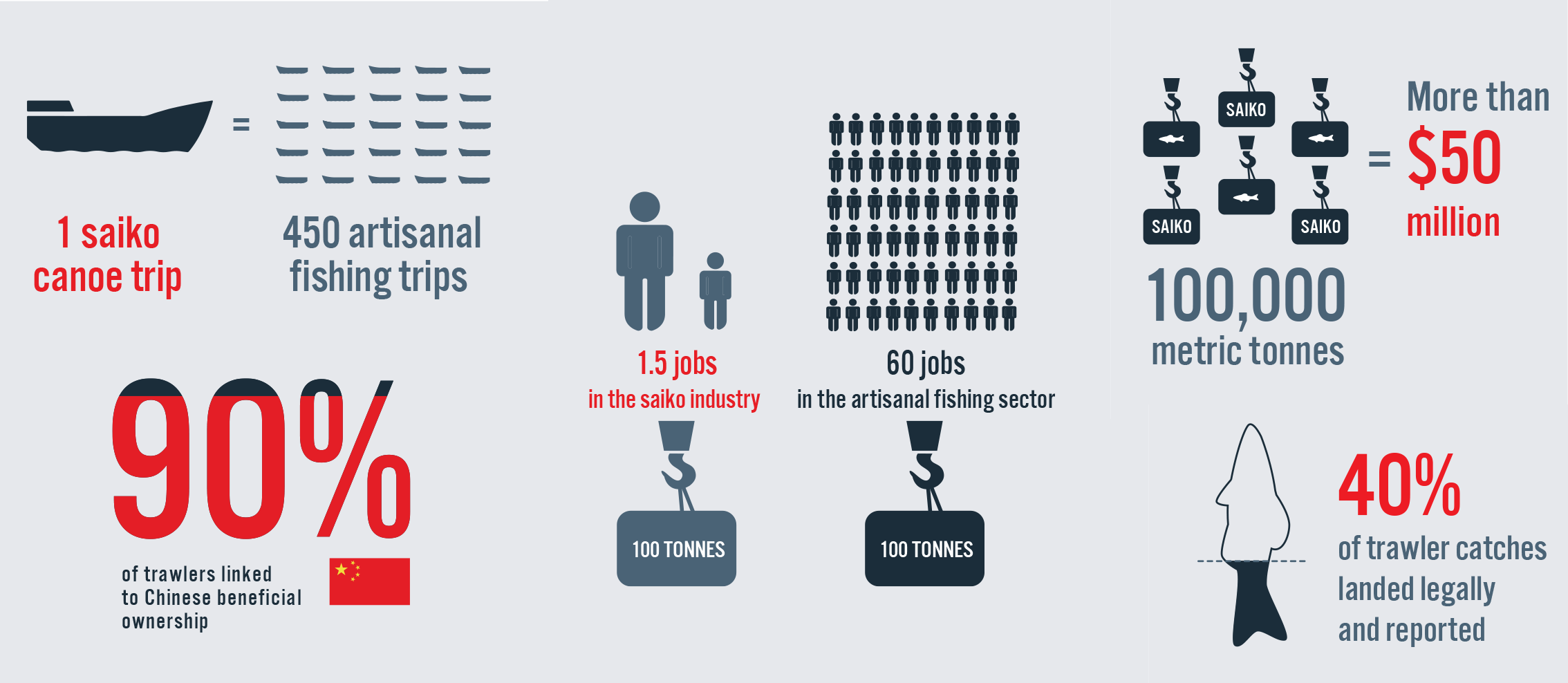
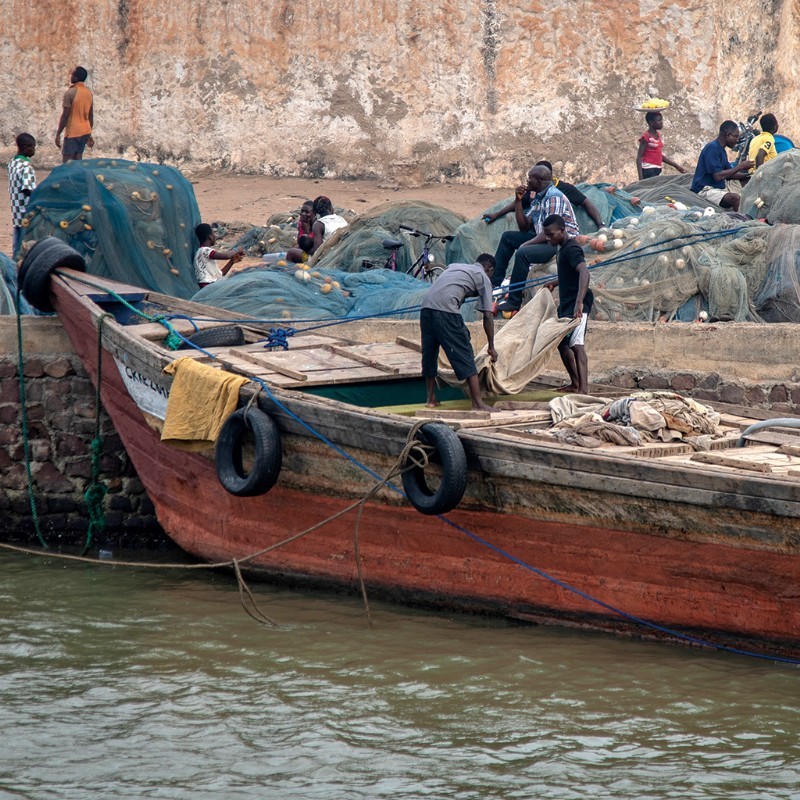
I’m waiting now. It can be that the trawler calls in an hour or next week, you don’t know.
Saiko canoe owner, Elmina
Saiko in practice
A saiko operation begins with the saiko operator establishing contact with one or more trawler companies based in Tema, 25 km east of the country's capital. Once this contact is established, the saiko canoe owners and crew must be on standby at all times. A call from the Tema office or from a trawler can come at any time, at which point they must get ready for departure.
When the owner or right-hand man receives a call to go out for a trans-shipment, the operation begins.
The saiko owner or his right-hand man calls on the watchmen to get things ready. The watchmen, usually one for a small saiko canoe and two for a bigger canoe, call the crew to prepare for departure. The hustlers and crew gather thick blankets, food and water for the journey, as well as supplies for the trawler crew and captain.
A bigger saiko canoe needs around 130 blankets made of thick cloth to keep the slabs of fish frozen during transport. The saiko canoes do not have cooling facilities but with the cloth they can keep the deep-frozen slabs of fish frozen for multiple days.
Although the practice has changed from solely trading supplies for by-catch, supplies still play a vital role in the trans-shipments. When a saiko canoe gets a call that a transshipment will take place, there is a list of supplies to bring. Bringing the right supplies is crucial to maintaining a good relationship with the trawlers: the wrong supplies can result in not being called again for a trans-shipment.
The saiko operator may also offer the Ghanaian members of the trawler crew extra supplies or money to obtain valuable information about the quality of the fish. With trans-shipments often taking place at night, bad quality fish is usually hidden beneath the good fish. Building a good relationship with the crew may even motivate them to package more high-quality fish in slabs for the next trans-shipment.
When the blankets are on board, the fuel is arranged and the supplies are packed, the saiko canoe is ready to leave. The captain receives the coordinates of the location to meet the trawler. The duration of a trip varies greatly, from six to eight-hour trips in the Elmina-Winneba waters, up to multiple day trips at the border of Côte d’Ivoire.
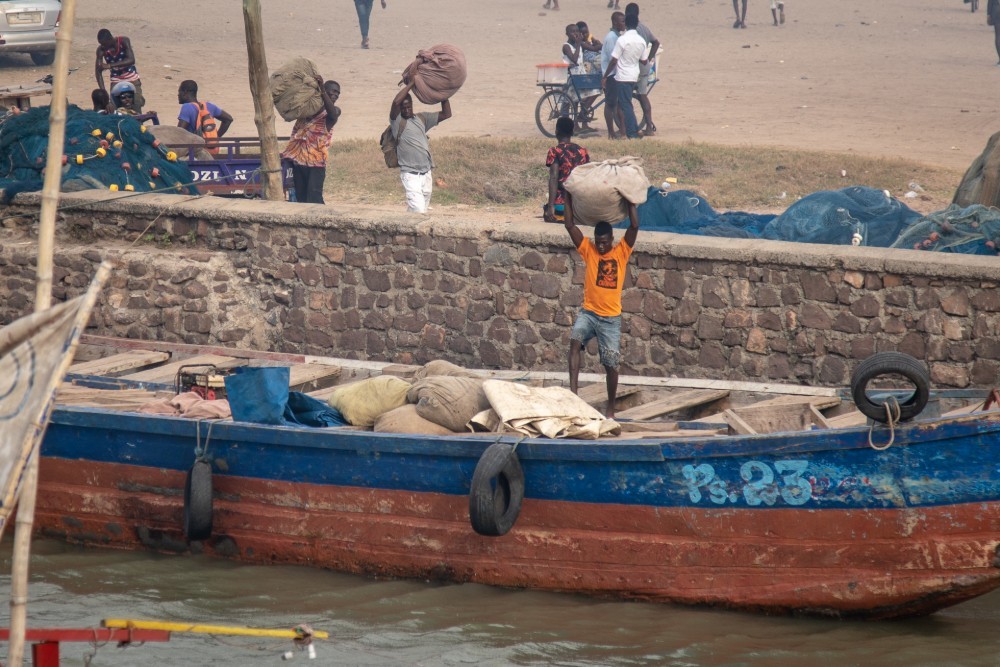
While the saiko canoe is at sea, the watchmen prepare for the landing of the fish and are ready to act in case something happens to the canoe. A watchman may be required to go to sea if the saiko canoe runs out of petrol or has trouble with the engine. It is essential that such problems are solved quickly to ensure the fish are not spoiled, and to maintain a good relationship with the trawler. Delays can mean the saiko canoe not being called again, which can put the owner out of business.
On arrival at the trawler, one or two saiko crew members of high rank climb onboard. Once onboard, they check the quality of the fish and strike a deal, usually with the Chinese captain and his right-hand man. Checking the quality of the fish is often a guess because most trans-shipments take place at night and the lower quality fish is generally stored beneath the higher-quality fish in the ship’s hold.
The saiko canoes therefore rely a lot on the Ghanaian members of the trawler crew for information about the quality of the fish in the slabs. When the fish is of poor quality, the saiko canoes generally still buy the fish but in lower quantities. This often depends on their relationship with the trawler and trawler company: not buying the fish after a call from Tema can ruin a relationship and put a canoe out of business. However, this works both ways. If a saiko canoe continually receives low value fish it will be hard to make a profit and the saiko canoe may decide not to do business with that particular trawler or company anymore.
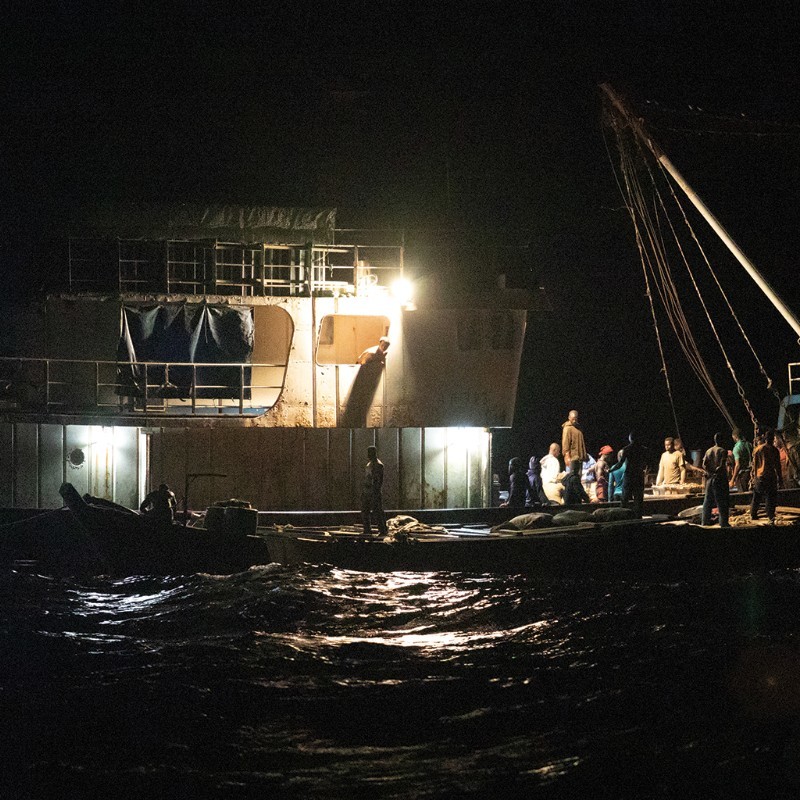
The trawlers call each other to discuss a price. It is hard to negotiate – even when the fish is of bad quality you have to take it. It happened that I finally drove the price down and started loading the canoe, but I was told to stop by the China captain as another canoe wanted to pay more. I couldn’t do anything!
Saiko canoe owner, Elmina
When a deal is struck the trans-shipment of fish starts. The Ghanaian members of the trawler crew pass the 11 kg slabs of frozen fish to the crew of the saiko canoe. While the fish is being transferred, one or two people count the number of slabs. For a medium sized canoe, a full consignment of 2,200 slabs can take three hours to load. Where the trawler has more fish than one canoe can carry, the canoe will call other canoes in Elmina to come and load the remaining fish – a trawler may supply around five canoes at a time. When the trawler is empty and the canoe packed, both go on their way. The saiko canoes from Elmina land the fish at the landing site and the trawlers continue fishing, now having supplies and storage space available again.
When a saiko canoe returns before the market opens at around 06:00, or after it is closed at around 18:00, the watchmen stay on the canoe to guard the fish. It is essential to sell the fish as fast as possible, to keep it fresh and prevent spoilage. As soon as the fish deteriorates in quality it becomes harder to sell, leading to more spoilage and less profit or even losses. Most of the slabs are sold in smaller quantities on the spot to fish traders and small processors. There are also larger buyers who place pre-orders, which can go up to a few thousand slabs. These buyers come with small trucks and retrofitted minibuses (‘trotros’) from all across the Central and Western Regions, and from inland urban centres such as Kumasi.
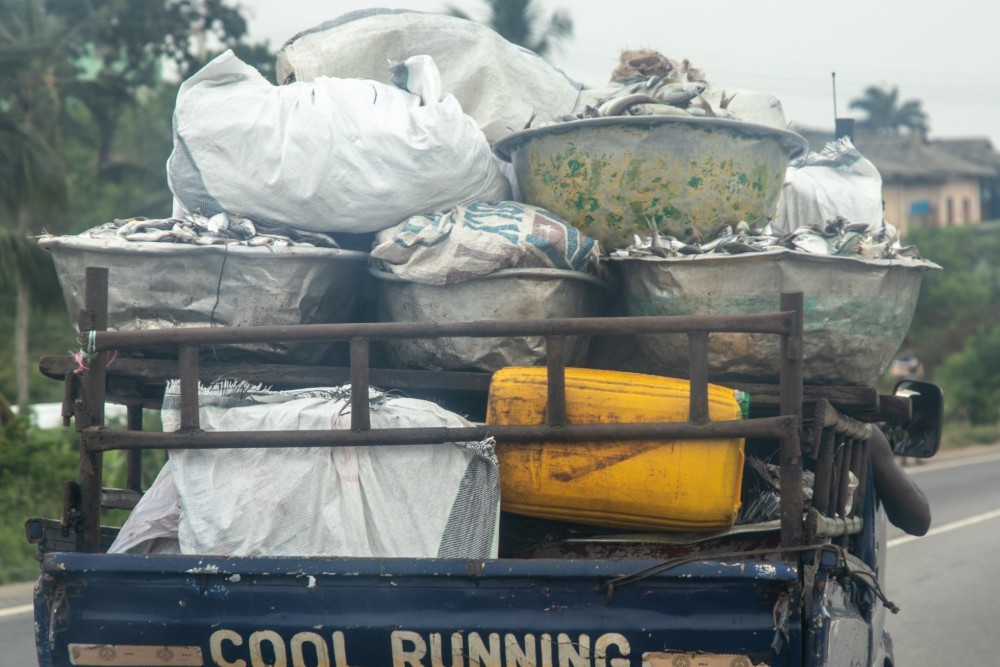
The fish is packed in cloth and can remain frozen for more than six hours, enough to reach the cold stores around Kumasi. During the unloading, the watchmen go into the canoe’s hold and hand the slabs over to helpers standing on the deck of the canoe who hand them over to hustlers and carry women. The process is watched over by a trusted helper of the canoe owner, or by the canoe owner himself, who counts the number of slabs leaving the canoe and controls to whom they go.
The hustlers and carry women then bring the 11 kg slabs to the buyers, or they are handed over to the fish traders and small processors waiting next to the saiko canoe. The hustlers carry the fish to the trucks and retrofitted trotros. They are generally not paid by the owners of the saiko canoes but rather make their living from taking small amounts of fish from the slabs using a screwdriver. Some buyers prefer to pay the hustlers and forbid them to take off fish from the slabs. The hustlers help to pack the trucks and cars for transport. Purchasers of larger quantities of fish often make use of the same trusted hustlers, as fish can easily go missing in the hectic market.
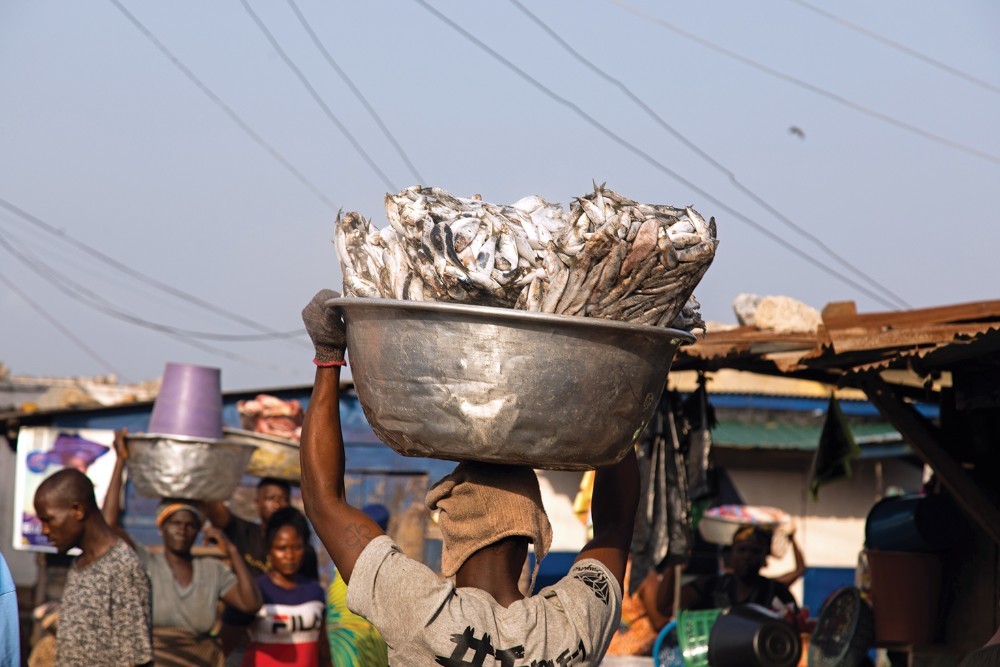
Foreign ownership
The majority of these trawlers are linked to Chinese beneficial owners, in spite of local laws prohibiting foreign ownership and control in the trawl sector.
From the perspective of artisanal fishers, saiko is seen as enabling foreign-backed industrial trawlers to engage in destructive fishing practices and unfair competition on a massive scale.
By allowing saiko to continue, it becomes ever more challenging to secure the buy-in of artisanal fishers to address their own destructive fishing practices and issues of over-capacity in the canoe sector.
And yet, these actions are also critical to saving Ghana’s fisheries from collapse.
Saiko provides a route for trawlers to sell illegally harvested fish, perpetuating the illegal fishing activities of the industrial trawl fleet. It serves as a disincentive for trawlers to reduce their by-catch, and rather incentivises the targeting of species that are in high demand for local consumption. This includes the severely depleted small pelagic stocks, such as sardinella, that are the key target of the artisanal fleet. Landings include significant quantities of juvenile fish harvested before they have had an opportunity to reproduce.
This research suggests that Ghana’s artisanal fishing sector, and the wider Ghanaian economy, is losing tens of millions of dollars each year to saiko through the misappropriation of catches, degradation of stocks and depression of prices in the market. With saiko landings valued at more than US$50 million annually, and with much of this benefit accruing to vessels with Chinese beneficial ownership, eliminating the practice should result in at least part of this revenue being captured by the artisanal sector and the economic benefit staying in Ghana.
Ending saiko in ghana
Enforcement must be intensified, and offenders sanctioned with the full force of the law to ensure deterrence. This should include any foreign beneficiaries that are found to be profiting from the trade. More broadly, it is imperative that the fishing effort of the trawl fleet be reduced to sustainable levels.
Around 200 coastal villages in Ghana, and over 10% of the population, depend on marine fisheries for their income. Should the resource disappear, mass migration, higher food prices and social upheaval along the coast can be considered a very real prospect.
Our report calls on the Ghanian government to take action to end this damaging practice, and save Ghana's struggling fishing sector.
